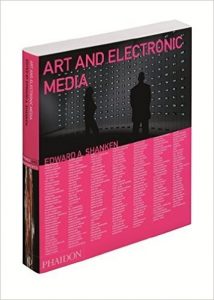Ascott created Organe et Fonction d’Alice au Pays des Merveilles (Organ and Function of Alice in Wonderland) for Les Immateriaux, the exhibition curated by Jean-Francois Lyotard at the Centre Pompidou in Paris in 1985. Organe et Fonction was accessible to anyone connected to Minitel (the French national videotex system begun in 1981). Ascott’s use of this system enabled a potential audience of thousands to experience the sort of intertextual pleating the artist had initiated in La Plissure du Texte. Organe et Fonction can be interpreted as an archetypal, postmodern artwork. Randomly selected quotations from a French translation of Lewis Carroll’s Alice in Wonderland were juxtaposed with quotations from a scientific treatise entitled Organe et Function, creating unexpected relationships and associations. Conventional notions of originality, authenticity, objecthood, narrative, and style were supplanted by appropriation, duplication, distribution, juxtaposition, and randomness
– Edward A. Shanken, "From Cybernetics to Telematics: The Art, Pedagogy, and Theory of Roy Ascott" in Roy Ascott, Telematic Embrace: Visionary Theories of Art, Technology, and Consciousness. Berkeley: U California Press, 2003.
